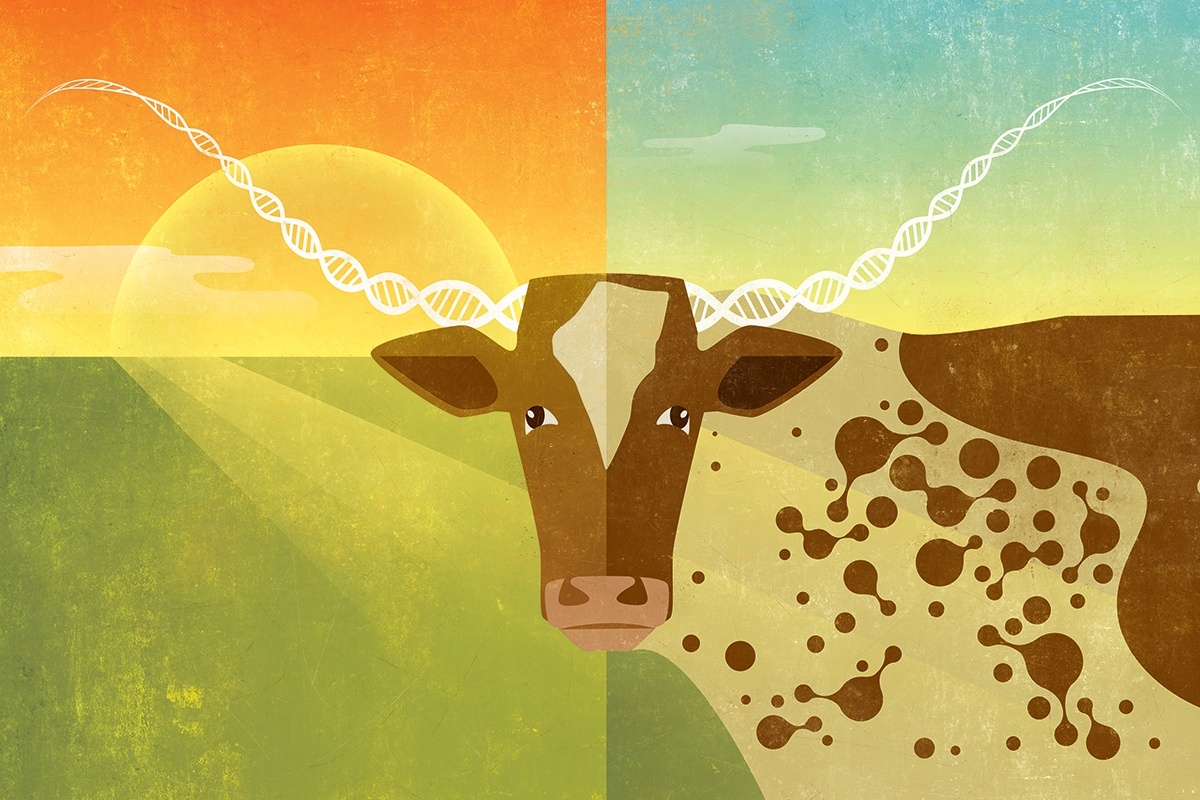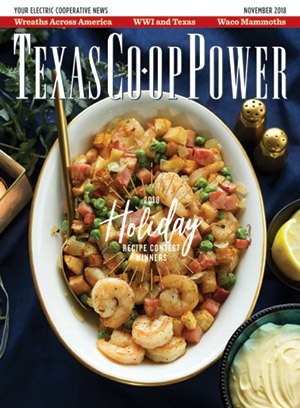The Texas longhorn is in trouble, and we’re not talking about the University of Texas football team. The breed that inspired UT’s mascot is as iconic a symbol of Texas and its history as the Alamo or Spindletop, but the fabled breed is in danger of disappearing, according to the Livestock Conservancy and a handful of breeders dedicated to preserving the traditional strain of longhorn.
This news may come as a surprise to people who see imposing longhorns ruminating in pastures around the state and perhaps even to some producers who raise the breed for its horns more than for its meat. But the conservancy’s 2018 report includes the 2013 census of livestock breeds, which lists the longhorn as “critically endangered” with about 3,000 purebreds in existence—1,200 in the U.S.—making one of Texas’ best-known breeds one of its most threatened.
So how can a creature that’s hardly an anomaly be on any endangered list? Quite simply: The old rugged longhorn isn’t what it used to be. The first longhorns were hardy Spanish cattle that thrived in harsh conditions. They developed extra-long horns to fend off predators and tight bellies to protect them from thorny undergrowth. Heifers calved early and lived well into their teens. The calves were smaller than other breeds’ calves and basically hit the ground running, as befits a four-legged prey animal in the wild.
Early ranchers valued longhorns for their hardiness and meat. They domesticated longhorns to some extent, but the animals went wild again during the Civil War. After the war, Texas cattlemen trailed them north, where they sold at great profit. According to the Texas State Historical Association, contractors drove 5 million–10 million cattle out of Texas and brought back enough money to help the state bounce back from the postwar depression.
Barbed wire and the introduction of European breeds like the Hereford made longhorns expendable. Ranchers crossbred longhorns to other cattle or abandoned the breed altogether, commencing the longhorns’ descent from iconic savior of a state’s economy to endangered species. The U.S. Forest Service started a breeding program to preserve the Texas longhorn and American bison at the Wichita Mountains Wildlife Refuge in Oklahoma in the 1920s. Later, the government called on Enrique E. Guerra to find more.
Guerra, who died in 2016 at the age of 86, was a 12th-generation Texan whose family received one of the first Spanish land grants in what is now Starr County. He spoke at the Livestock Conservancy’s 2014 annual conference in Austin about the 35 years he spent looking for true longhorns in Texas and Mexico.
“I knew where some wild ones were in Mexico,” he said. “I drove and rode thousands of miles looking for purebred longhorns. I found them hanging out in the wild country. We found a few living in the scrublands, eating prickly pears, spines and all, roots and things that cattle just usually don’t eat.”
Ropers managed to lasso the wild cattle and tie them to mesquite trees to wait for a truck. Guerra and his vaqueros corralled the cattle and fed them chopped-up prickly pear mixed with cottonseed oil.
“They didn’t know how to eat out of a trough or drink water if it hadn’t rained,” he said. “We had to teach them. Longhorns are hardy. Ticks don’t bother them. They’ll walk 35 miles to water. They’re rangy, bony and lean.”
Debbie Davis of Boerne, a breeder, grass-finished longhorn beef producer and member of the Cattlemen’s Texas Longhorn Registry, which strives to preserve historically correct longhorns, said many people who raise longhorns don’t always know very much about them.
“It’s shocking that so many in the industry can’t distinguish traditional Texas longhorns,” she said. “If the horns are straight, it’s not a pure longhorn. The twist is a recessive trait. Mix it with something else and you lose that twist.”
Not everybody in the business of breeding and raising longhorns believes they are endangered. The Texas Longhorn Breeders Association of America counts almost 750,000 cattle in its registry. Rick Fritsche, TLBAA registrar, believes it’s nigh impossible to identify a historically correct longhorn. “There was no DNA testing in the 1930s,” he said. “The longhorns ran wild for centuries, so there’s no way of knowing the bloodlines of those cattle that were rounded up.”
Ryan Walker, marketing and communications manager for the Livestock Conservancy, notes that a lot of cattle resemble Texas longhorns, but very few of them are free from outcrossing with other breeds.
“Even though genetically pure Texas longhorn cattle are critically endangered, they retain many traits that will be vital for the future of agriculture,” Walker said. “Purebred Texas longhorn cattle retain some of the most unique genetics of all cattle in America. Those genetics can help the cattle industry cope with a changing climate, drought conditions, feed shortages, evolving parasites and many other threats, but only if we are able to prevent them from going extinct.”
Clay Coppedge, a member of Bartlett EC, lives near Walburg.


